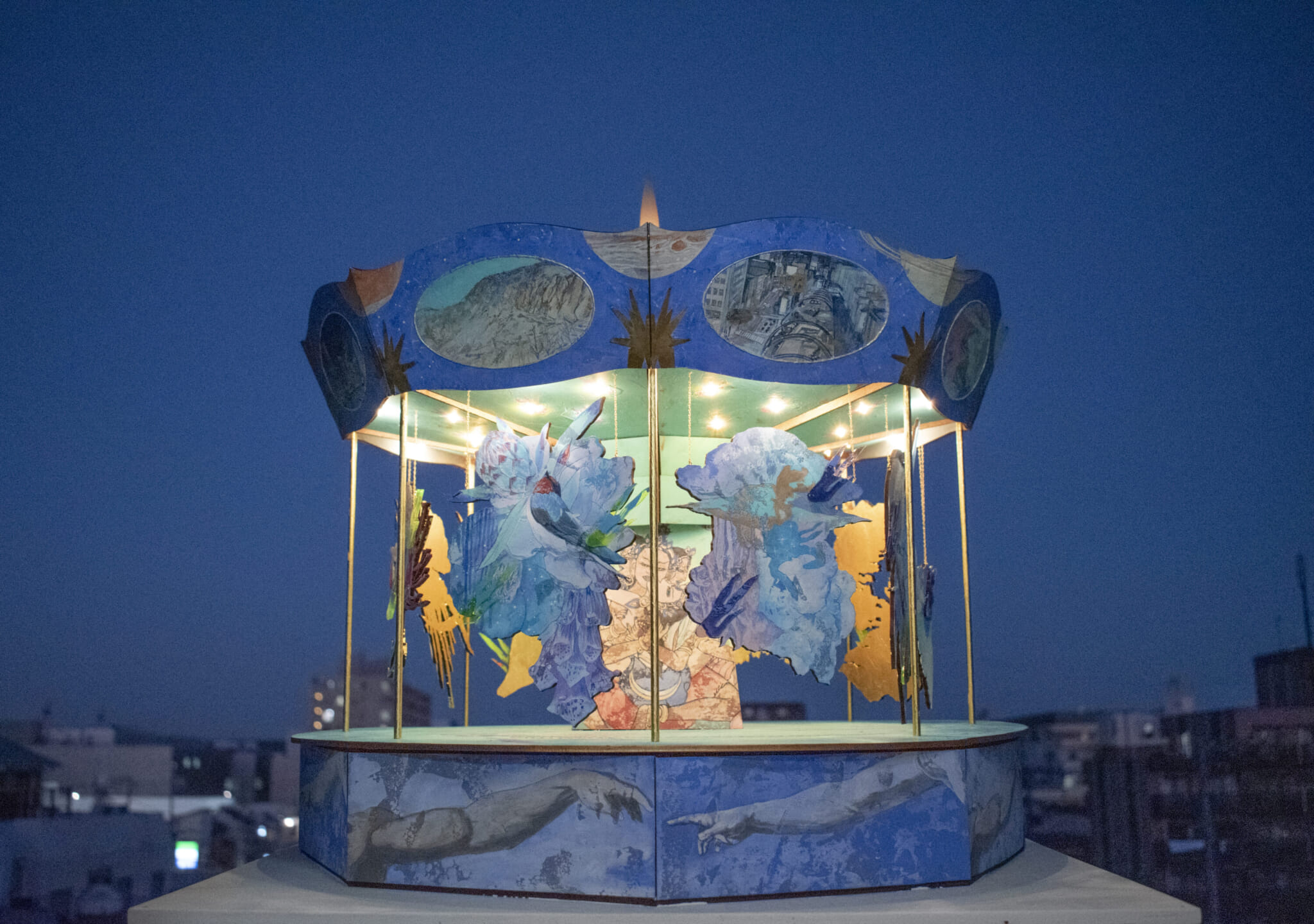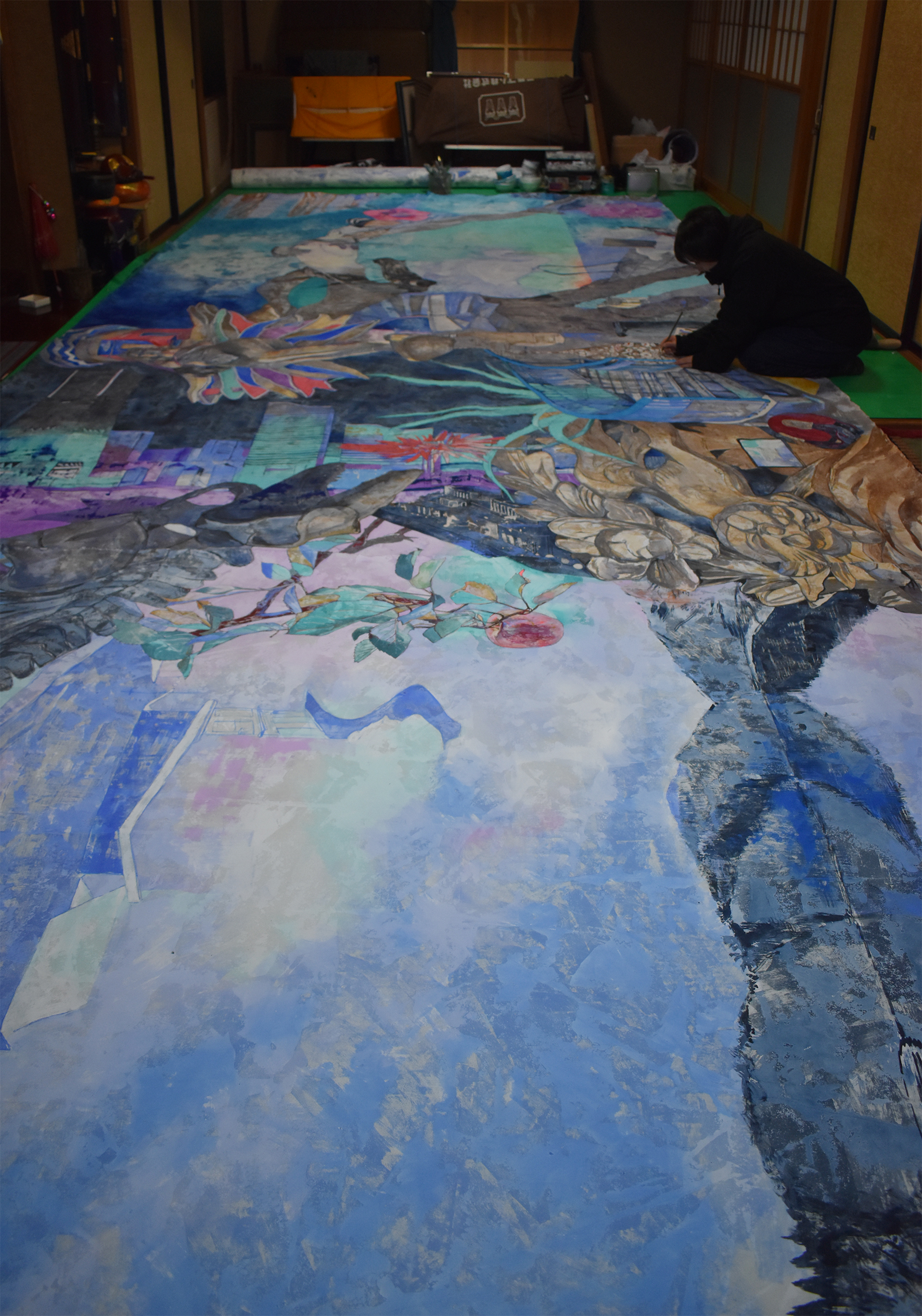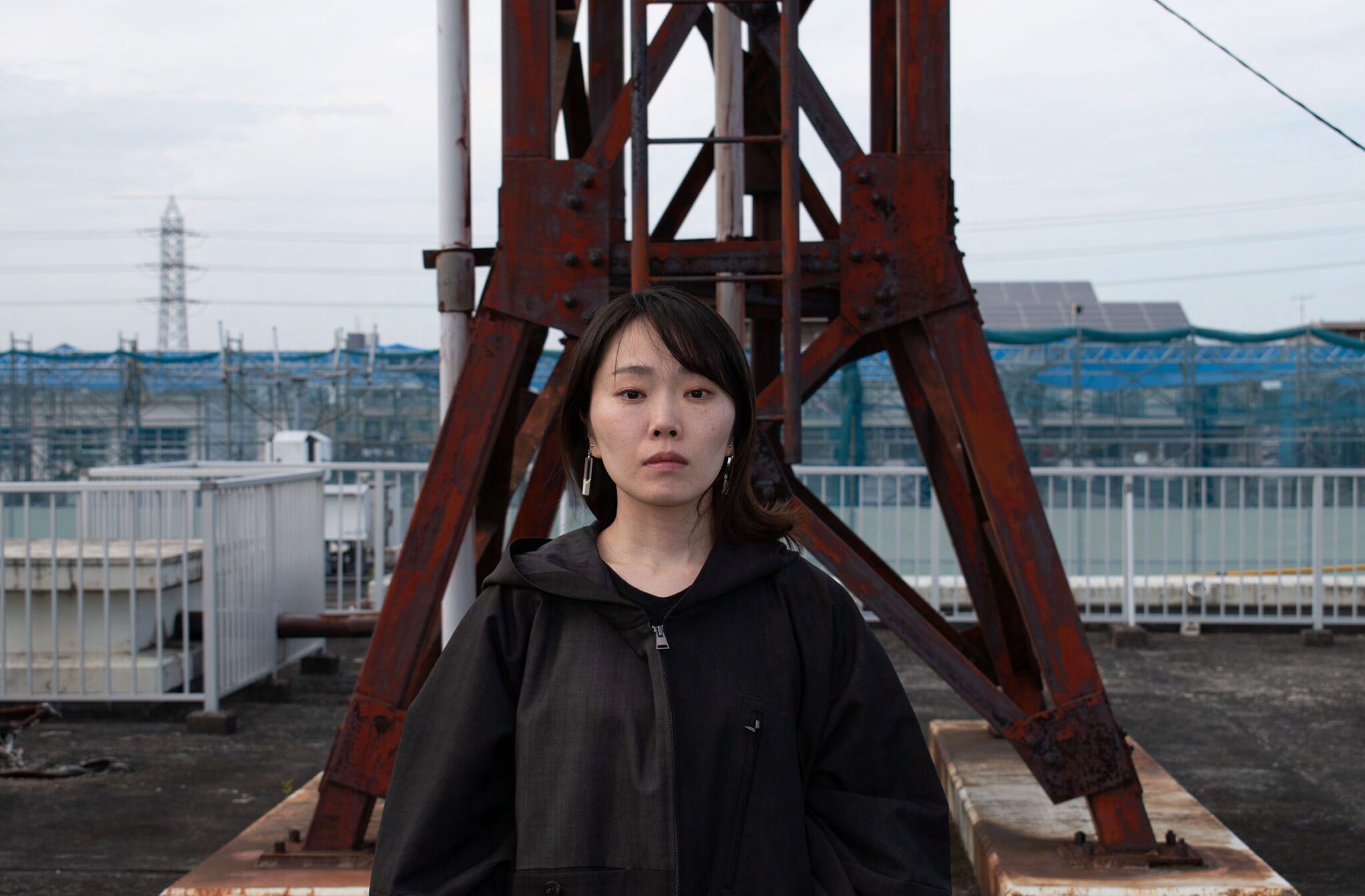Yamagata-born Sayaka Tada is part of a new generation redefining Nihonga, a Japanese painting style known for specific materials like washi paper and mineral pigments. Her work has been featured at the Tokyo Metropolitan Art Museum, as well as galleries and private spaces.
Can you describe your art?
Risokyo, an “ideal land” or utopia, has been my theme for a decade. In university, I studied notions of East and West and how the “East” was really a Western invention. For my graduation project, I compared ideas of utopia. I paint with acrylics and watercolors, but I also draw and have done 3D pieces. I’m not an oil painter, but I’m otherwise flexible in how I define my art. I think a lot of its vitality comes from “collisions” of styles and subjects: life and death, this world and the beyond, beauty and ugliness.
How did growing up in Yamagata Prefecture influence you?
I come from a family of farmers — we grew cherries and other fruit. For a time we struggled, and as a teenager I was embarrassed of my agricultural background, although it’s something I’m proud of now.
People have said my use of color is distinctive. I wasn’t aware of this at first, but seeing my work in group shows made me realize it is very blue. My hometown gets a lot of snow. Skiing, I noticed it was not just a monotone white or gray — it looked blue, too. I became fascinated with its shades. The overcast inland skies give it a unique tone, something different from the coast.

Birthday, 2020, Acrylic, pigment, brass, metallic leaf on wood, LED light, motor
Why did you choose Nihonga as your specialty?
I originally wanted to be a designer. I’m from a remote part of Yamagata where “artist” wasn’t thought of as a career, but manga made an impact on me. Before university, I studied under the Nihonga artist Kyoko Togi, whose sketches just blew me away. I wanted to create work like that.
Around the time I entered graduate school at Tohoku University of Art & Design (TUAD), there was starting to be a shift led by my instructor Natsunosuke Mise in thinking about Nihonga. Together with students, he reconsidered how it’s defined by materials; for instance, could a work be Nihonga if unorthodox paints like oils are used? I myself usually work with acrylics instead of the typical iwa-enogu mineral pigments, and viewers and selection committees have questioned whether I’m truly a Nihonga painter. I personally don’t insist on my work being labeled as Nihonga, but I don’t think it’s wrong to call it that, either.
You’ve been involved with the “Is Tohoku-ga (Tohoku Painting) Possible?” project. What is Tohoku-ga and how does it relate to other forms of Nihonga?
Professor Mise invited me to participate. Together, five of us created work from torn washi. I’ve since left the group while others have joined, but I’ve also contributed solo pieces. “Disaster” is one of the themes of the artworks, which tend to be massive landscapes. The initial aim was to consider whether a uniquely Tohoku style of painting exists. Nihonga itself was a construct of the Meiji era, and Tohoku-ga is a response to its tenuous position.

Paradise Lost, 2023, Acrylic, pigment, ink, graphite, metallic leaf on washi
Tell us about your masterpiece “Paradise Lost.”
The title refers to the John Milton poem, which hugely influenced Japanese manga and anime. I worked on it while reading the poem, painting at my family home and incorporating scenes from the Yamagata landscape. Gradually it became like an emaki picture scroll, paradoxically showing a kind of “paradise found.” A small figure on the far right returns to a longed-for home. I think that’s what utopia is, a place the soul can return to.
What are your future plans?
Last September I participated in the TUAD 30th Anniversary Exhibition, and through that I met a custom motorcycle builder who commissioned a large mural for his shop. It may take years to complete, but he lets me use the second floor of his shop as a studio when I’m in Yamagata. Washi paper won’t really hold up in a mechanic’s garage, so I’m working with acrylics on canvas this time.
Find out more about Sayaka Tada’s work online. Tada will hold a solo exhibition from October 14 to 29, 2023, at Kameido Art Center in Tokyo.









